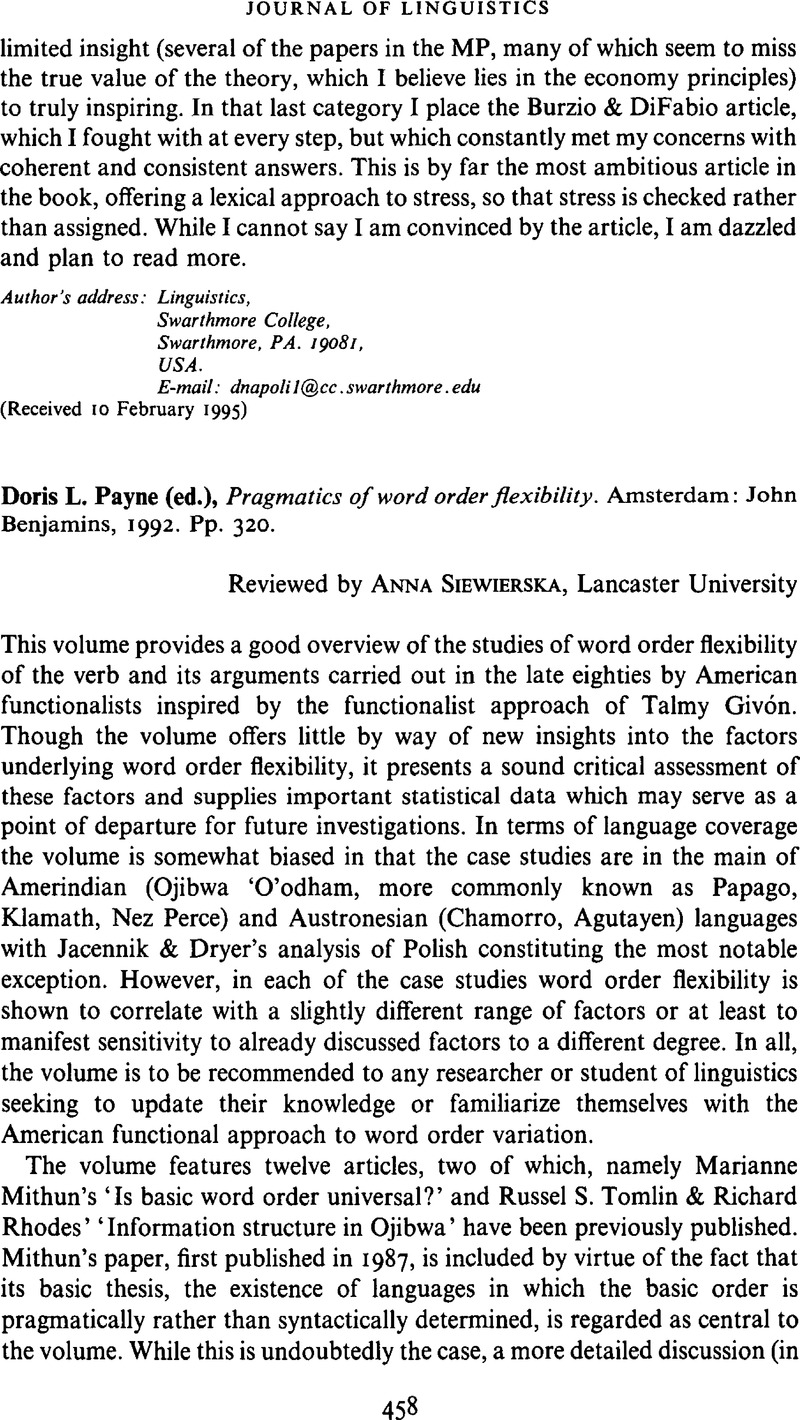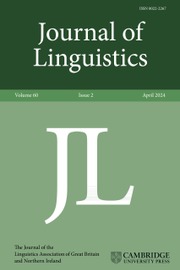No CrossRef data available.
Article contents
Doris L. Payne (ed.), Pragmatics of word order flexibility. Amsterdam: John Benjamins, 1992. Pp. 320.
Review products
Doris L. Payne (ed.), Pragmatics of word order flexibility. Amsterdam: John Benjamins, 1992. Pp. 320.
Published online by Cambridge University Press: 28 November 2008
Abstract
An abstract is not available for this content so a preview has been provided. Please use the Get access link above for information on how to access this content.

- Type
- Reviews
- Information
- Copyright
- Copyright © Cambridge University Press 1995
References
Daneš, F. (1974). Functional sentence perspective and the organization of the text. In Daneš, F. (ed.) Papers on functional sentence perspective. The Hauge: Mouton. 106–128.CrossRefGoogle Scholar
Firbas, J. (1964). From comparative word order studies. Brno studies in English 4. 111–126.Google Scholar
Firbas, J. (1987). On the delimination of theme in functional sentence perspective. In Driven, R. & Freid, V. (ed.) Functionalism in linguistics. Amsterdam: John Benjamins. 138–156.Google Scholar
Givón, T. (1987). The pragmatics of word order: predictability, importance and attention. In Hammond, M. et al. (eds.) Studies in syntactic typology. Amsterdam: John Benjamins. 243–284.Google Scholar
Hopper, P. (1979). Aspect and foregrounding on discourse. In Givón, T. (ed.) Discourse and syntax: syntax and semantics 12. New York: Academic Press. 213–241.Google Scholar
Kiss, K. (1987). Configurationality in Hungarian. Budapest: Reidel and Akadémia Kiadó.CrossRefGoogle ScholarPubMed
Siewierska, A. (1993). Syntactic weight vs. information structure and word order variation in Polish. Journal of Linguistics 29. 233–265.CrossRefGoogle Scholar
Vilkuna, M. (1989). Free word order in Finnish: its syntax and discourse functions. Helsinki: Suomalaisen Kirjallisuuden Seura.Google Scholar


